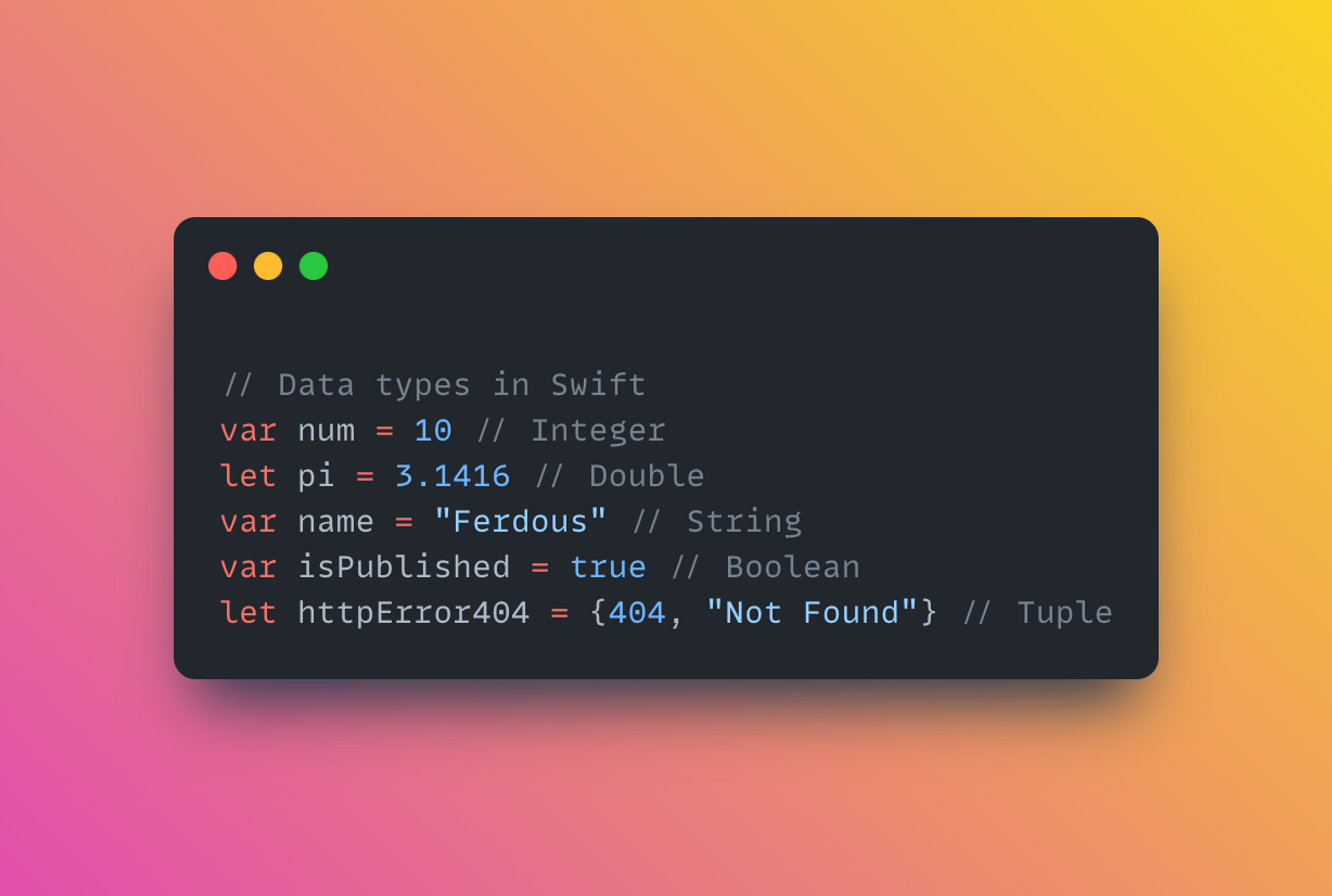Data
Data is at the core of software development. Without data, a program would have no input or output, and would essentially be useless. As a programming language, Swift provides a range of data types that developers can use to represent and manipulate data in their programs. In this blog post, we will explore the basics of data types in Swift and how they can be used in programming.
Data Types
In Swift, data types are divided into two categories: value types and reference types.
Value Types
Value types are data types that are passed by value, meaning that a copy of the data is created when they are passed to a function or assigned to a variable.
Examples: Integers, floats, tuples, and boolean values.
Reference Types
Reference Types are passed by reference, meaning that a reference to the original data is passed instead of a copy.
Examples: Classes, arrays, and dictionaries.
Basic Data Types in Swift
In Swift, there are several basic data types that are used to represent different types of data. These include:
- Int: Used to represent integer values, such as -1, 0, and 1.
- Float: Used to represent floating-point numbers, such as 3.14 and -2.0.
- Double: Used to represent double-precision floating-point numbers, which are more precise than floats.
- Bool: Used to represent boolean values, which can be either true or false.
- String: Used to represent text values, such as "hello world".
- Tuples: Group multiple values into a single compound value, such as `{404, "Not Found"}`
- Optionals: Represents two possibilities: Either there is a value and you can unwrap the options to access that value, or there isn't at all, such as `Int("123")`
- nil: A special value that represents optional variable's valueless state, such as `serverResponseCode = nil`.
Declaring a value in Swift
In Swift, you can declare a value by using the `var` or `let` keyword, followed by the name of the variable, a colon, and the type of the variable. For example:
var myNumber: Int = 10 // Integer
var pi = 3.1416 // Float
var pi: Double = 3.14159 // Double
var country = "Bangladesh" // String
var isTrue = false // Boolean
var httpError404 = {404, "Not Found"} // TupleIf you want to declare a constant instead of a variable, you can use the `let` keyword.
Data types are an essential part of programming in Swift. They allow developers to represent and manipulate data in their programs and are the building blocks of software development. By understanding the basics of data types in Swift, you can create more efficient and effective programs that can handle a wide range of data types and data structures.
About Ferdous Mahmud Akash
Hey there! I'm a self-taught iOS developer from Bangladesh.
I'm also passionate about sharing my knowledge and experience with other aspiring developers through my blog at ferdousmahmud.co
Thank you for visiting my website, and feel free to reach out if you have any questions or just want to say hello!
